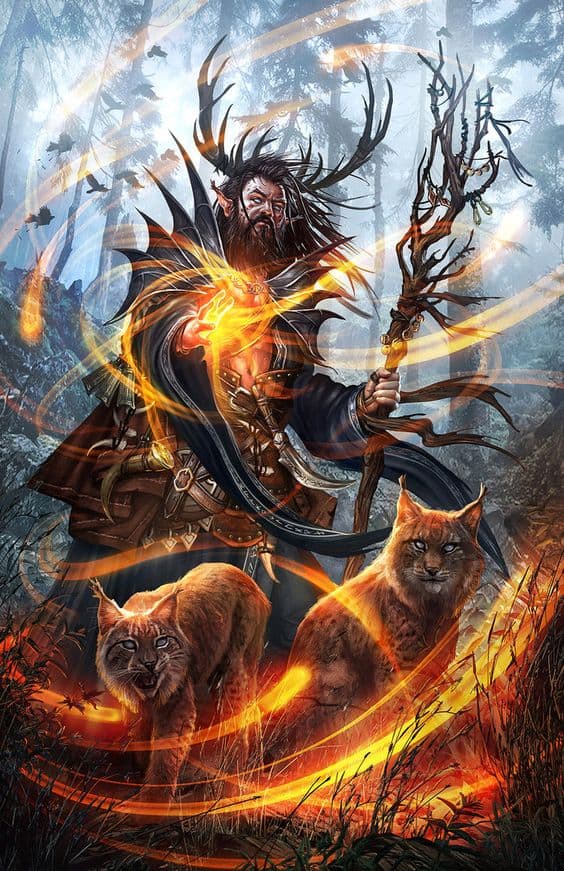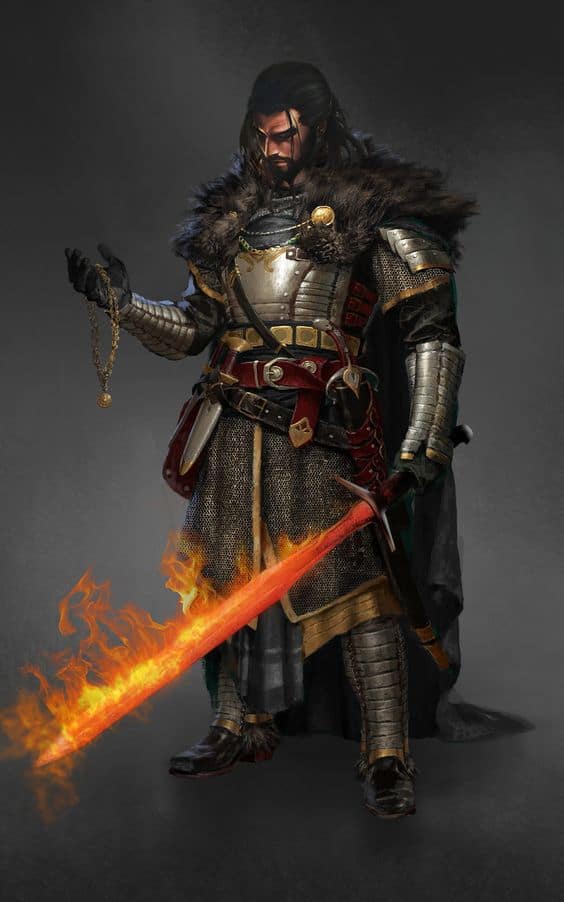D&D 5e: Cavalier Fighter Guide

D&D 5e: Cavalier Fighter Guide
Role in the Party
The Cavalier Fighter is themed as a mounted based fighter that protects their allies. The subclass description states that the Cavalier excels at mounted combat, tends to have good social skills, and knows how to defend their allies.
There are some problems with the Cavalier though; features conflict with each other and with the feats you might want to take, and few of its features help you with mounted combat. Every non-ribbon feature is based around defending allies through either impairing enemy movement or punishing them for attacking allies.
As a Cavalier, you will almost certainly be a strength-based melee character, and you may have a mount. Even though your features aren’t that powerful, you will fill somewhat of a tank role, protecting your allies instead of protecting yourself.
Epic
Good
Meh
Bad
The Cavalier Fighter subclass is found in Xanathar’s Guide to Everything. Click here to pick up your own copy of Xanathar’s Guide to Everything!
Cavalier Fighter Features
Bonus Proficiency
When you choose this archetype at 3rd level, you gain proficiency in one of the following skills of your choice: Animal Handling, History, Insight, Performance, or Persuasion. Alternatively, you learn one language of your choice.
Not a strong feature, but not meant to be. It’s just a ribbon meant to show that you’re a big-brained fighter instead of a smooth-brained fighter like the Champion.
Born to the Saddle
Starting at 3rd level, your mastery as a rider becomes apparent. You have advantage on saving throws made to avoid falling off your mount. If you fall off your mount and descend no more than 10 feet, you can land on your feet if you’re not incapacitated.
Finally, mounting or dismounting a creature costs you only 5 feet of movement, rather than half your speed.
This only does three minor things, but they’re nice to have on a mounted character, especially since this is also a ribbon feature and not meant to be load-bearing. Somehow, this is the only feature that helps you with being mounted, so I wouldn’t say this lets you “excel” at mounted combat. I suspect this subclass was designed with the intent of not shoehorning you into mounted combat but just giving you a tiny nudge towards it instead.
Unwavering Mark
Starting at 3rd level, you can menace your foes, foiling their attacks and punishing them for harming others. When you hit a creature with a melee weapon attack, you can mark the creature until the end of your next turn. This effect ends early if you are incapacitated or you die, or if someone else marks the creature.
While it is within 5 feet of you, a creature marked by you has disadvantage on any attack roll that doesn’t target you.
In addition, if a creature marked by you deals damage to anyone other than you, you can make a special melee weapon attack against the marked creature as a bonus action on your next turn. You have advantage on the attack roll, and if it hits, the attack’s weapon deals extra damage to the target equal to half your fighter level.
Regardless of the number of creatures you mark, you can make this special attack a number of times equal to your Strength modifier (a minimum of once), and you regain all expended uses of it when you finish a long rest.
This is a decent feature. Enemies need to move away from you if they don’t want to have disadvantage to hit your allies, and also, you get a limited use bonus action attack regardless of how far away the enemy was at the time they made that attack. You could mark an enemy and end your turn, then when the enemy walks 30 feet away and uses a Scorching Ray on the rogue, you can walk up to them on your next turn and unleash a solid bonus action attack. Notably, the specially marked attack works on all kinds of damage, so if they cast Fireball on your party instead of making a weapon attack, you still get your special bonus action attack.
It’s redundant with Polearm Master’s bonus action attack, but it still deals more damage than that feat’s attack and has advantage. There’s also a redundancy with the advantage generated by Mounted Combatant if you’re attacking a creature smaller than your mount.
The last downside I have to mention is that marking a creature does nothing if they felt like hitting you anyway since this only does something if they try to hurt your allies. Still, despite the redundancy and hurdles, it’s still a good feature.
Warding Maneuver
At 7th level, you learn to fend off strikes directed at you, your mount, or other creatures nearby. If you or a creature you can see within 5 feet of you is hit by an attack, you can roll 1d8 as a reaction if you’re wielding a melee weapon or a shield. Roll the die, and add the number rolled to the target’s AC against that attack. If the attack still hits, the target has resistance against the attack’s damage.
You can use this feature a number of times equal to your Constitution modifier (a minimum of once), and you regain all expended uses of it when you finish a long rest.
Bleh! We’re a character who almost certainly took the Sentinel feat, or maybe the Protection fighting style. This is redundant with Protection and mutually exclusive with Sentinel’s reaction attack. And you can only use it a number of times equal to your constitution modifier… every long rest. If you don’t have Protection or Sentinel or any other similar feature, this is only a mild defensive feature since it only works against nearby allies and has incredibly limited uses.
Lastly, remember that the Cavalier supposedly “excels at mounted combat”: if our mount is standing still next to an ally so we can use this feature, we’re not taking advantage of the mount’s maneuverability.
Hold the Line
At 10th level, you become a master of locking down your enemies. Creatures provoke an opportunity attack from you when they move 5 feet or more while within your reach, and if you hit a creature with an opportunity attack, the target’s speed is reduced to 0 until the end of the current turn.
This is the most redundant feature we’ve had so far. Sentinel is a feat for protecting allies and punishing enemies. We want it for the reaction attack because Warding Maneuver is finite. This feature is a slightly modified version of Sentinel’s first bullet point: it works when creatures move within our reach instead of leaving our reach, but it’s otherwise identical to how Sentinel normally works.
This is such a painfully redundant feature that does the same thing as a feat that is good enough for us to take regardless of this feature, so this is Bad. If you never wanted to take Sentinel, this would be okay, but c’mon, you’re a Cavalier! You want Sentinel!
Ferocious Charger
Starting at 15th level, you can run down your foes, whether you’re mounted or not. If you move at least 10 feet in a straight line right before attacking a creature and you hit it with the attack, that target must succeed on a Strength saving throw (DC 8 + your proficiency bonus + your Strength modifier) or be knocked prone. You can use this feature only once on each of your turns.
Now and then, you can knock people prone. Excellent. Charging toward someone on a horse is just as effective as hopping off and running at them yourself for some reason.
Vigilant Defender
Starting at 18th level, you respond to danger with extraordinary vigilance. In combat, you get a special reaction that you can take once on every creature’s turn, except your turn. You can use this special reaction only to make an opportunity attack, and you can’t use it on the same turn that you take your normal reaction.
This lets you do any opportunity attack, including the built in Polearm Master one. The obvious thing to do is take Sentinel and Polearm Master and use a long polearm.
Scenario 1: A combat starts and twenty monsters run towards you. Maybe an ally gives you advantage on all your attacks with Foresight or something. You then make twenty opportunity attacks and every time you hit one, you freeze it in place and deal a ton of damage. Maybe you have Great Weapon Master and a +3 halberd and hit with fifteen of your twenty attacks and deal 23.5 average damage with each attack, and across fifteen attacks, that’s 352.5 damage dealt outside of your turn. This is just area of effect damage at this point and doesn’t cost your reaction, so it’s like Fireballing all those enemies for free with no action cost, and it’s unlimited use. Nice.
Scenario 2: A combat starts and a Crystal Greatwyrm starts its turn fifty feet away, unleashes her breath weapons on you, and then flies away from you instead of towards you. This feature has done nothing.
This has the potential to be a phenomenal feature, but it depends on the circumstance. You’ll get extra mileage out of this if your dungeon master uses a lot of low hit point fodder minions in boss fights. Remember that you can use normal reactions like Shield or Warding Maneuver or the Protection fighting style (except on the same turn as the special reaction) since you still have a “real” reaction to use.

Strengths
You can punish enemies who are fond of attacking your allies instead of you, and you start with a solid level 3 feature that allows you to do this. At very high levels, you also get some interesting and unique abilities that expand your action economy and let you do more things without using a bonus action or a “real” reaction.
Weaknesses
If your dungeon master’s monsters are content to just hit whatever’s in front of them, you’ll gain very little from the Cavalier subclass since the purpose of the subclass is to either punish enemies who try to attack your allies or to give enemies reasons to hit you instead of them, so it’s much less useful if they already want to hit you. Additionally, parts of your subclass feature are redundant with feats and fighting styles you would want to take anyway. Your features are also less effective against large hordes of enemies until very high levels since a lot of them are impractical to use on multiple creatures.
Best Race Options
If you’re going to make yourself the target of enemy attacks, you want something to boost your defense; Githzerai have a 1/day Shield spell, but you don’t have the spell slots to fuel it unless you multiclass. I would recommend the Hill Dwarf for its extra hit points, or the Earth Genasi for its bonus action Blade Ward, and all three of these races have other delicious benefits too.
Loxodon can grapple with their trunk and keep enemies held in place while you hit them with a greatsword, maul, or heavy polearm. Grappling is somewhat redundant with what you can already do, but sometimes you just need to grab someone and beat them to death.
This is a very generic and boring recommendation, but you are going to be a feat-hungry character. Variant Human and Custom Lineage, as usual, are likely your best choices.
Choosing the Right Skills
Athletics is a must-have for any strength-based character since it lets them be a great grappler, resist grapples themselves, and be the party’s strength expert, and Acrobatics is also handy for characters who want to be good at all physical activities.
Persuasion is the best skill your first level 3 ribbon feature offers, and Animal Handling is essential for mounted characters who use normal animals as mounts. You may consider taking Deception or Insight if you were raised among particularly shady nobility.
Perception is the most important skill in the game, so you almost need proficiency in it.
Fitting Feats
I have mentioned Sentinel nine times already, and that’s because it’s the ultimate feat for any “protector” character. Stop enemies from running away from you and punish them if they hit someone near you. Amazing. Then there’s the Polearm Master synergy where someone enters your reach and gets frozen in place ten feet away from you, which could be longer than the enemy’s melee reach…
Mounted Combatant is mandatory for a mounted character and useless if you’re not a mounted character. Save your mount from a horrible death and get advantage to hit a wide variety of creatures. Perfect. This won’t protect your mount in all situations though; nearly any dragon can instantly kill your horse, so you may need to resort to unusual means to save your mount from these, like replacing your mount with an elephant or pegasus something else that’s particularly hardy.
You are a strength-based melee character, so Great Weapon Master is the best way to skyrocket your damage. Advantage synergizes well with this feat, and your special bonus action attack from your level 3 feature has advantage, so you can expect to hit for a truckload of damage.
Optimal Backgrounds
The Noble or Knight backgrounds are both very similar but appropriate given the flavor text of the Cavalier.
The Soldier background is a typical and sensible background for most fighters. The Cavalry specialty is ideal for a mounted combatant, and infantry or standard-bearer is ideal for a non-mounted Cavalier.
The Wildspacer feat from the Astral Adventurer’s Guide may be the most mechanically powerful background since it gives you the Tough feat for free, but not all tables allow or use backgrounds that offer free feats or similar benefits, so keep that in mind.
Multiclassing Options
Barbarians have Rage and Reckless Attack, and a 1-3 level dip will work brilliantly for you. I do not recommend Ancestral Guardians because it’s redundant with what you can already do, so you could go with Zealot for damage or Totem Warrior (Bear) for resistance to all damage except psychic. Bear Totem’s resistances will frustrate enemies; they’ll do half damage if they hit you with anything, but it’s vastly harder to hit your allies and they’ll be punished for doing it. Either way, you win.
A level of Undead Warlock lets you activate Form of Dread to attempt to frighten enemies on a hit. You can achieve a similar effect to the Sentinel feat by hitting an enemy with an attack from 10 feet away, making them unable to move closer to you. You won’t be able to use this on opportunity attacks, and the disadvantage to hit your allies from being frightened is redundant with your marking ability, but it’s still a fine one level dip. You can always use your marking without penalty, and it’ll help if the enemy passes their saving throw.
You have a limited use bonus action attack, so if for some reason you have a high wisdom score, you could always skip Polearm Master and take a level of War Cleric for more limited use bonus action attacks. I do not recommend this with lower than a 16 wisdom though. Also, Cleric spellcasting is handy.
Would I recommend playing a Cavalier Fighter?
The Cavalier is a strange subclass with some problems. You can make a perfectly workable Cavalier with the right table and/or the right feats, but you may be frustrated by the subclass if your dungeon master runs monsters in certain ways or if you have long adventuring days that deplete your long rest resources. Your mid-level features are also underwhelming, so I wouldn’t recommend this in a high-level campaign.
Levels 3-6 are where the Cavalier shines the most; not only are your level 3 features the best ones you’ll get for a while, but low levels are where horses and other mounts are the least likely to die instantly from something.








